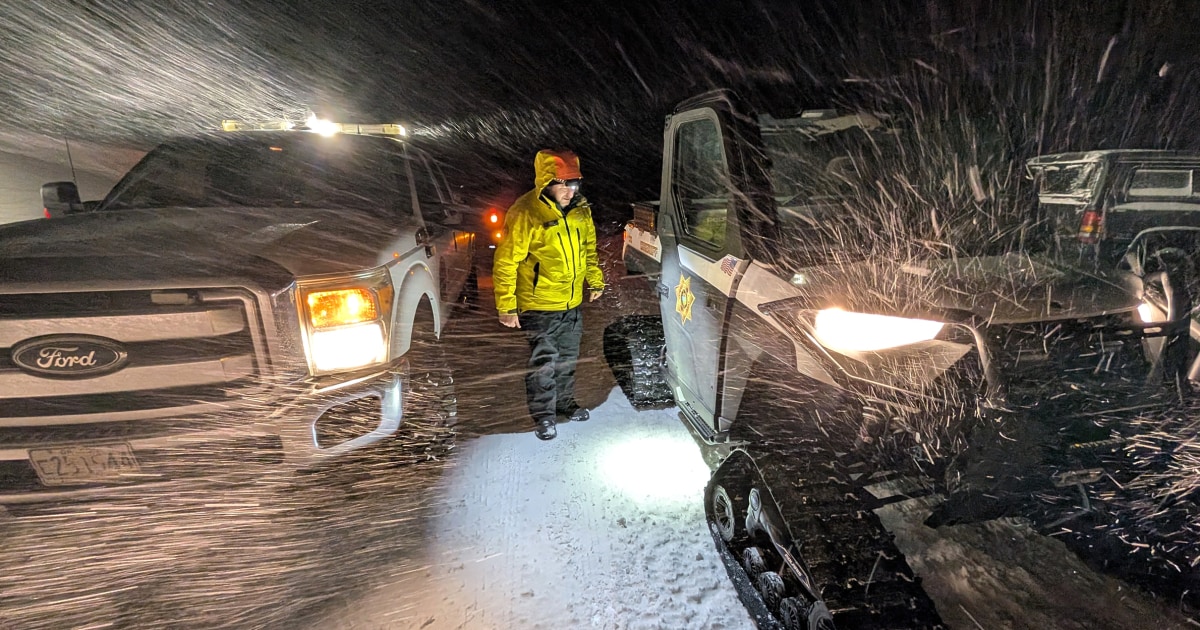Tragic Avalanche Claims Lives of Couple in Central Oregon
A devastating avalanche in Central Oregon has claimed the lives of a couple, stirring emotions and raising critical questions about safety in winter recreation. The incident, which occurred in a popular backcountry skiing area, has not only shocked the local community but also prompted a review of avalanche preparedness and response protocols. As the community mourns the loss, it’s essential to delve into the circumstances surrounding this tragic event, the inherent dangers of winter sports, and the measures that can be taken to prevent such tragedies in the future.
The Incident: A Day of Adventure Turns to Tragedy
On a seemingly ordinary winter day, the couple, both experienced outdoor enthusiasts, set off for what they anticipated would be an exhilarating day of skiing in the snow-covered mountains of Central Oregon. The area, known for its breathtaking landscapes and thrilling slopes, attracts many adventurers each year. However, the day took a devastating turn when the couple triggered a massive avalanche.
Witnesses reported seeing clouds of snow billowing down the mountainside, engulfing the skiers in mere moments. Rescue teams were deployed immediately, but unfortunately, the harsh conditions and the avalanche’s intensity complicated recovery efforts. The couple was found deceased, a heart-wrenching reminder of the unpredictable nature of winter environments.
Understanding Avalanches: What Went Wrong?
Avalanches are a natural hazard that can occur in mountainous regions, particularly during winter months when snow accumulation is significant. Factors such as temperature fluctuations, the weight of fresh snow, and the terrain can contribute to avalanche risk. In this tragic case, several elements may have played a role:
- Snowpack Conditions: The stability of the snowpack is crucial. Recent weather patterns, including heavy snowfall followed by warming temperatures, can create weak layers within the snow.
- Terrain: The slope’s steepness and orientation can affect avalanche risk. Certain aspects are more prone to sliding due to their exposure to sunlight or wind.
- Human Factors: Even experienced skiers can misjudge conditions. Group dynamics and decision-making can also impact safety.
Community Reaction: Mourning and Reflection
The loss of this couple has sent shockwaves through the Central Oregon community. Friends and family members are grappling with the heartbreak of their absence. Local outdoor clubs and organizations have expressed their condolences and are urging fellow adventurers to prioritize safety and awareness when engaging in winter sports.
Community gatherings have emerged, providing a space for people to share stories about the couple and discuss the importance of avalanche education. This tragic event serves as a poignant reminder of the risks associated with backcountry skiing and the necessity of being prepared.
Raising Awareness: The Importance of Avalanche Safety
In light of this tragic avalanche incident, it’s vital to emphasize the importance of avalanche safety. Understanding the risks and taking necessary precautions can save lives. Here are some essential safety tips for those venturing into avalanche-prone areas:
- Education: Take an avalanche safety course to learn about snow conditions, terrain recognition, and rescue techniques.
- Check Conditions: Always check avalanche forecasts before heading out. Local agencies provide valuable information on current conditions.
- Gear Up: Carry essential safety equipment, including avalanche beacons, shovels, and probes. These tools can be lifesavers in emergencies.
- Travel Smart: Never ski alone. Always travel with companions and establish a communication plan in case of emergencies.
- Assess Terrain: Choose routes carefully, avoiding steep slopes and known avalanche paths whenever possible.
Investigating the Incident: What Comes Next?
Following the avalanche that claimed the lives of the couple, local authorities and avalanche experts are conducting thorough investigations to understand the factors that led to this tragedy. These investigations aim to provide insights that can help improve safety measures in the area and educate the public on the inherent dangers of backcountry recreation.
Additionally, the incident has sparked discussions among local officials about the need for increased signage in high-risk areas, enhanced avalanche monitoring systems, and greater public outreach regarding winter safety. Investing in community education and resources is crucial to preventing future tragedies.
A Look at Avalanche Preparedness and Response
Avalanche preparedness involves not only understanding the risks but also having a plan in place for emergencies. The following strategies can help enhance preparedness:
- Practice Rescue Techniques: Regularly practice using your avalanche gear with your group so everyone knows how to respond in an emergency.
- Develop a Response Plan: Create a clear plan of action for what to do in the event of an avalanche, including communication and rescue strategies.
- Stay Informed: Join local groups that focus on avalanche safety and participate in workshops and training sessions.
Conclusion: Honoring Their Memory
The tragic avalanche that claimed the lives of a couple in Central Oregon serves as a somber reminder of the dangers that come with winter recreation. While the community mourns their loss, it is crucial to channel this grief into action—promoting awareness, education, and preparedness in the face of such inherent risks.
As we reflect on this incident, let us not only remember the couple who lost their lives but also commit to ensuring that others can enjoy the beauty of winter landscapes safely. By fostering a culture of safety and respect for the natural environment, we can honor their memory and work towards preventing future tragedies.
See more Update My News


